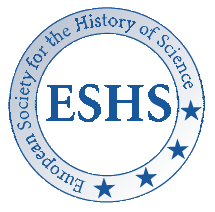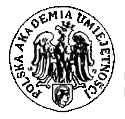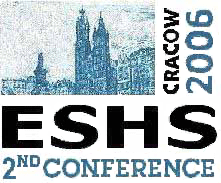Last modification: 25 September 2008
Online Book of Abstracts - A Thematic List:
SESSIONS / SYMPOSIA
Edited by Michal Kokowski
http://www.cyfronet.pl/~n1kokows/home.html
n1kokows@cyf-kr.edu.pl
Symposium R-12.
CHANGES OF PARADIGMS IN BIOLOGICAL SCIENCES BETWEEN
RENAISSANCE AND MODERN TIMES
ORGANIZER AND CHAIRPERSON OF THE SYMPOSIUM:
Alicja ZEMANEK (Krakow, Poland)
zemaneka@ib.uj.edu.pl
R-12.
The embryonic tree: A themata of Entwickelungsgeschichte
Sabine BRAUCKMANN (Hanover, USA; Tartu, Estonia)
u0386312@utah.edu
sabine.brauckmann@gmail.com
With his Entwickelungsgeschichte der Thiere Karl Ernst von Baer (1792-1876) initiated a new research program searching for the mechanisms that transform an egg into an embryo (von Baer 1828, 1837). He intended his 'observation and reflection' on embryogenesis to enhance the comparative approach of animal classification by demonstrating vertebrate affinities (homology). Supported by his observations he stated that vertebrate and articulate animals emerge from the primitive streak and, therefore, share a homologous structure for a short moment during their developmental history. Further, he proposed that everybody interested in developmental history should apply the botanists' method that classified the plant classes according to their embryonic shapes instead of describing the adult form. In stressing his idea that the type is more perspicuous during embryogenesis than in the adult forms he emphasized the comparison of the different developmental stages. For illustrating his reflections how species-specific embryogenesis creates a branching tree of animal classes von Baer constructed a tabular diagram. He openly conceded that the 'flatness' of the table was futile to depict the dynamics of developmental stages and demanded for literary dumping the genealogical stepladder of Enlightenment. In his article On the unity of structure in the animal kingdom Martin Barry (1802-1852) paraphrased von Baer's statements and depicted a tree-like diagram of animal development which should demonstrate the 'common structure' as well as the causes of morphogenetic and histological variety. It is speculated that Charles Darwin (1809-1882) did know Barry's diagram and utilized this image when drawing the idea of a branched evolution in his diary.
My talk will present a short sketch of von Baer's research program and its three-dimensional mapping by Barry. I want to demonstrate that von Baer's tabular diagram and Barry's tree-like image are congruent when one rotates the former to the right. To visualize his argument of the inadequacy of two-dimensional images, I will discuss von Baer's unpublished hand drawing of an embryonic tree resembling the famous tree-like figure in Darwin's diary. Methodically I am employing the concept of themata (cf. Cavailles) for tracing how the tree metaphor became embedded even in apparently incommensurable theories like, e.g. idealistic embryology and Darwinian evolution. My main objective is to elucidate the differences and/or similarities of their reasoning on development.
R-12.
The evolution of the ethnobotany as the field of science in 19th and 20th century
Piotr KLEPACKI (Krakow, Poland)
klepacki@ib.uj.edu.pl
Ethnobothany has gained its scientifical status in the second half of the 19th century. At first its main aim was to gather information about useful plants witch have high economical potential. Accidentally collected facts were spread among many sources. As the 19th century was ending systematizing works appeared as well as case studies (how different tribes use plants). In the 20th century ethnobotany has extended into several sub-disciplines: ethnoecology, traditional agriculture, cognitive ethnobotany, material culture, traditional phytochemistry and palaeoethnobotany. Now it is interdisciplinary approach joining not only botanists but also representatives of other disciplines.
The methods as well as the range of questions it has to answer have changed through years. Among new challenges there are: the identification of patterns in system of knowledge, development of the knowledge of human cultural perception, providing new plant-originated medicines. The last sphere mentioned is realized with more and more social responsibility. It means that the laws of intellectual property of tribes whose indigenous knowledge is used in research are respected. The considerable practical and social value of traditional knowledge has been noticed and the 'applied ethnobotany' is a good example of involving ethnobotany's possibilities in the biodiversity prospecting and conservation biology.
In Poland the path that ethnobotany has gone trough was different as well as its objects. Polish low social spheres were explored rather than tribes living in colonial countries. At first, in the 19th century, there were just facts noted. Later the reflection on gathered material came and the syntheses in the second half of the 20th century appeared. Initially the ethnobotanical research was based on a 'scientific belief' that revival of pre-Christian culture is possible. In the 20th century the main aim was to save people's knowledge about plants and deepen this field. Most of Polish works on ethnobotany are rather connected with cultural studies than dealing with plants themselves.
R-12.
The evolutionary synthesis and Th. Dobzhansky
Mikhail B. KONASHEV (Saint-Petersburg, Russia)
mbkonashev@mail.ru
Formation of modern evolutionary biology, in particular "evolutionary synthesis" remains an actual problem of history of biology of XX century. Among the co-founders of the "evolutionary synthesis" in XXth century Th. Dobzhansky had especial place. He has proposed the evolutionary concept in famous book Genetics and the Origin of Species (1937) which was a first in the number of volumes which made main conceptual framework of modern evolutionary theory. Dobzhansky's synthesis was unique unity of Russian and Western evolutionary and cultural thoughts and traditions, re-thought and re-established experimental and naturalistic approaches in biology as well as research trends of two schools of genetics - Yu. A. Philipchenko and T. H. Morgan.
Already before his departure to the USA in the end of 1927 Dobzhansky had an understanding of all basic problems which were necessary for solving on a way to evolutionary synthesis. Then he had as ideas all basic elements of his future evolutionary theory. Dobzhansky's way to "evolutionary synthesis" done already in the USA consisted, first of all, in search of appropriate object of research, an equipment and the technology of studying of that evolutionary problems through only it was possible to come to the new evolutionary theory. Dobzhansky's "evolutionary synthesis" in 1937 was incomplete as Dobzhansky did not have an opportunity to carry out completely the research program which he had still in 1922-1926. As well as in case of Ch. Darwin, new evolutionary concept of Dobzhansky in many parts and aspects still demanded experimental testing, confirmation and claryfication which took almost 15 years between an output of the first edition of "Genetics and the Origin of Species" in 1937 and third one in 1951.
R-12.
Relationship between Libri Picturati A. 16-30 and printed Renaissance botanical works; some new data on Clusius Codex and Cesi mycological Codex
Andrea UBRIZSY SAVOIA (Rome, Italy)
andrea.ubrizsy-savoia@uniroma1.it
Many of the botanical watercolours of Libri Picturati match the engravings in some of Carolus Clusius' (Ramon-Laca, 2001), M. Lobelius', J. Dalechamps', R. Dodoens' publications (Egmond, 2005). Illustration of "Fungi favaginosi", "Sonchus laevis Matth." and "Archangelica" in Lobelius' Kruydtboeck (1581) are based on watercolours in the Libri Picturati.
Two 16th-early 17th century mycological codices, one is by Clusius on the mycological flora of Pannonia from 1579-1584, the other is by Federico Cesi (1586-1630), mainly on the mycological flora of Umbria (Italy) from 1623-1629, are considered to be the first extensive scientific illustrations on fungi. The Cesi Codex contains the first images of microscopic observations. For a long time both were believed lost and consequently were not influential. The discovery of a whole copy of the Clusius Codex and also an iconographical collection containing a large number of copies taken from the Cesi Codex (Ubrizsy, 1980) demonstrate the use and influence of these fundamental works.
REFERENCES
Egmond F., 2005 - Clusius. Cluyt, Saint Omer. The origins of the sixteenth-century botanical and zoological watercolours in Libri Picturati A. 16-30.
Nuncius XX (1): 11-67.
Ramon-Laca L., 2001 - Charles de l'Ecluse and Libri Picturati A. 16-30. Archives of Natural History 28: 195-243.
Ubrizsy A., 1980 - Il codice micologico di Federico Cesi. Rendiconti Classe scienze mat., fis., nat., Accademia Nazionale dei Lincei 68 (2): 129-138.
R-12.
Methodology of Renaissance botany and the 'Libri picturati' (A. 18-30) watercolour collection
Alicja ZEMANEK (Krakow, Poland)
zemaneka@ib.uj.edu.pl
Bogdan ZEMANEK (Krakow, Poland)
zemaneka@ib.uj.edu.pl
Botany was among the leading disciplines of science during the Renaissance period. Owing to geographical discoveries, many new plants brought to Europe were examined by herbalists, who also started investigating the native flora of particular European countries. At that time there was no commonly used system of plant names, nor standardised method of morphological description, which is why plant illustration played a significant role in documenting nature.
The Jagiellonian Library (Krakˇw, Poland) holds one of the largest collections of plant pictures drawn during the Renaissance - 'Libri picturati' (A. 18-30), connected with the activity of Charles de L'╔cluse (Clusius) (1526-1609). A large number of pictures have scientific annotations containing plants names, and information on habitat, morphology, cultivation, etc. In the 'Libri', elements of the old and new paradigm in botany can be observed. The features of the 'old paradigm' include quotations of ancient authors; the manner of depicting flowers painted with artistic skill, but generally without presenting their detailed structure, in one case a 'fantastic structure' - a smiling human face inside the flower of an orchid being drawn; adding to that the authors paid special attention to underground plant organs, which were very highly esteemed as containing the 'healing humours of herbs'.
'Libri picturati' also reflect the new trends in Renaissance botany, such as an interest in plant morphology, habitat, phenology, and the geographical origin of species. One must note the rare quotations of superstitions and magic. To sum up - the collection is not only a unique document joining the aims of art and science, but also the document of the 'Renaissance paradigm in botanical science'. Interdisciplinary studies concerning many aspects of it have been carried out (the 'Libri picturati' project).




